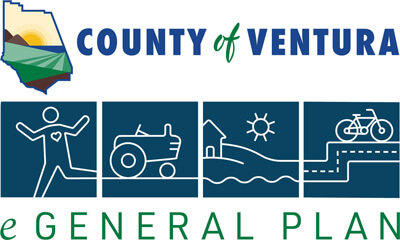
Hazards and Safety
Ventura County is in a region that is prone to a variety of natural disasters, including wildfires, coastal flooding and flood hazards, and debris flows. Flood, wildfire, and sea level rise events associated with climate change are likely to increase in frequency and severity in the region. In addition to natural hazards, Ventura County also has a number of transportation facilities and military installations that increase risks for human-induced hazards, such as aircraft accidents, hazardous material spills, and exposure to excessive noise. While it is impossible to completely avoid natural and human-induced hazards, this Element establishes goals and policies to protect life, minimize property damage, and maintain or restore services during future disasters and emergencies. This policy framework will help to reduce hazards and ensure public safety in Ventura County.
This Element, along with other Elements in the General Plan, includes policies and programs that will help the County adapt to climate change impacts and increase the County’s resilience. A detailed discussion of the County’s vulnerability to climate change, along with a summary of which policies and programs in various Elements are part of the County’s adaptation strategy in response to such effects, is included in Appendix B, Climate Change.
Ventura County Hazard Mitigation Plan
The Ventura County Hazard Mitigation Plan for the County of Ventura planning area was developed in accordance with the Disaster Mitigation Act of 2000 (DMA 2000) and followed the Federal Emergency Management Agency’s 2011 Local Hazard Mitigation Plan guidance. The Hazard Mitigation Plan incorporates a process where hazards are identified and profiled, the people and facilities at risk are analyzed, and mitigation actions are developed to reduce or eliminate hazard risk. The implementation of these mitigation actions, which include both short and long-term strategies, involve planning, policy change, programs, projects, and other activities.
